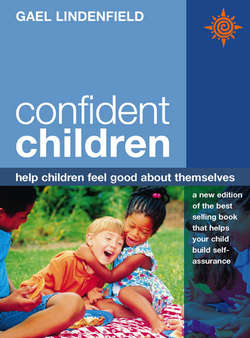Читать книгу Confident Children: Help children feel good about themselves - Gael Lindenfield, Gael Lindenfield - Страница 9
Chapter One What exactly is confidence? Everything you need to know
ОглавлениеIn recent years the word ‘confidence’ seems to have acquired a fashionable ‘buzz’. Cars, computers, insurance policies, football players and even lipsticks are being sold on the basis that they are ‘confident’ performers. The word itself has acquired a variety of meanings for different people. Our first task, therefore, must be to clarify exactly what we mean when we use the word confidence in relation to people.
A very wide definition with which most people may agree might be: ‘Confident people are people who feel OK about themselves.’
For general communication purposes, this rather vague concept is quite adequate, but we soon realize its limitations when we start trying to summon up more of this important ‘OK’ stuff for either ourselves or our children. It is at this point that we realize how vital it is to have a clearer idea of what exactly we are searching for.
When I was asked to write my book Super Confidence, I was fortunately forced to do some long, hard thinking around the definition of confidence and come up with an analysis of its specific components. I did this by listing the qualities and skills I had observed in people with a higher degree of self-confidence. I have since found that this list has proved extremely useful in a number of ways. First, it has enabled me to plan and lead much more effective confidence-building programmes. Secondly, it has helped participants on my courses, and my readers, not to feel so overwhelmed by their ‘lack of confidence’ because their problem had been broken down into more manageable ‘bite-sized chunks’. Thirdly, it has proved to be an invaluable checklist. For example, when I find my own confidence ebbing (and of course it does from time to time), I can go through the list and quickly identify where the ‘weak spots’ are and then put into action a rescue plan for my own mental health!
When I started to do my ‘confidence analysis’, it soon became clear that there were in fact two fairly distinct types: inner and outer. The inner kind is the one that gives us the feeling and belief that we are OK; the outer kind enables us to appear and behave in a manner which denotes to the outside world that we are self-assured. And, because the
Inner confidence gives us the feelingand belief that we are OK
inner and outer kinds of confidence support each other, together they make for something much more powerful and effective than the sum of their parts.
Let’s now examine both kinds of confidence in more depth and see what bearing the components of each might have on the feelings, behaviour and performance of our children. As you read the next two sections, mark or note down the particular components that are of interest to you. Perhaps these might be ones which you feel need boosting or developing in your own child or children, or they may be ones which your own life experience has taught you are especially important.
